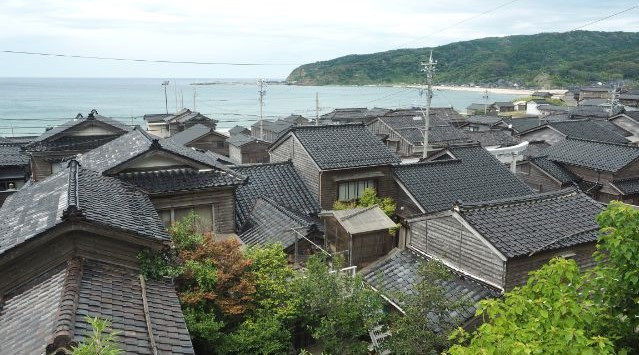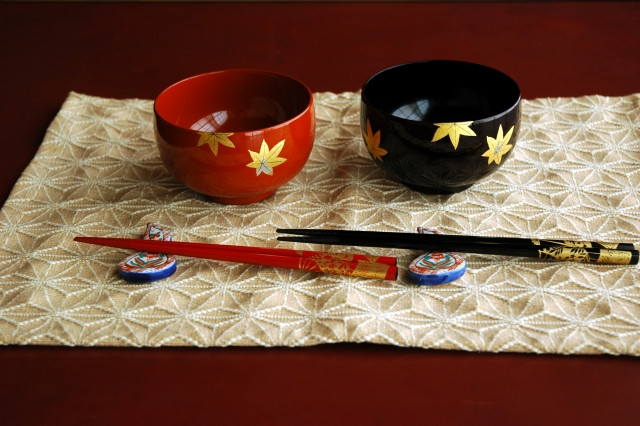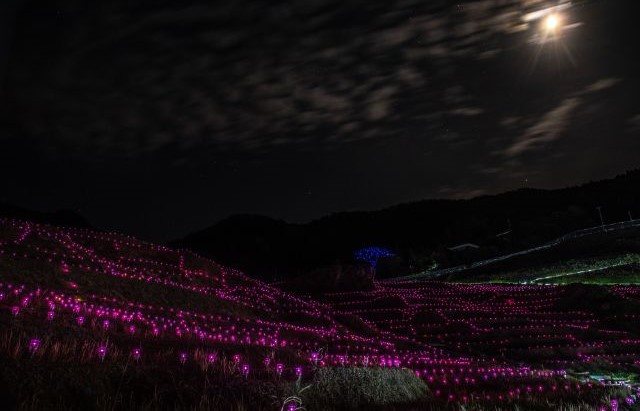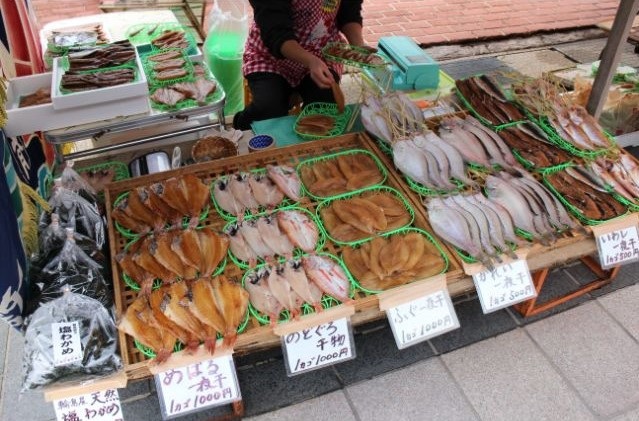At Ishikawa Prefecture’s northern peninsula tip lies the coastal city of Wajima. A small yet highly popular tourist destination for its scenic Senmaida Terrace Paddy Fields, it features the beauty of four seasons and beaches. The city is also not lacking in cultural attractions with grand festivals and prized lacquerware.
Table of Contents
- Introduction to Wajima City
- Best of Wajima City
- Wajima’s Kiriko Festival
- Access to Wajima City
- Takeaway
Introduction to Wajima City

History
Wajima was once, amongst ten others, an important port city of Japan. It was part of an essential trade route called the Kitamaebune (北前船) which translates to “Ships Heading Towards the North”. This sea route, especially active during the Edo and Meiji Periods, was used to transport cargo from Honshu Island to Hokkaido via the Sea of Japan.
※ Kanazawa Port and Airport Office, “Port of Wajima”
Although no longer a thriving port town, Wajima has become important to Japan for its other aspects, namely historical relevance and preservation of cultural heritage. To this day, the town has preserved several historical properties including a village once occupied by owners of Kitamaebune ships. Aside from that, the city also celebrates festivals in memory of greater times.
※ Kitamae Bune Assoc., “Wajma City, Ishikawa”
Geography and Population
Nestled in the northern peninsula tip of Ishikawa Prefecture, Wajima is a far-flung area from the modernity of Japan. Its entire western side faces the open Sea of Japan. Its primary industries include agriculture and fishing, with a side of tourism.
Its latest demography record in 2021 reveals that the city is populated by only a little over 25,000 people. It’s a huge decline compared to 1960 when it had over 57,000 residents.
※ Wajima City, "Population / number of households (latest)" ※ Ministry of the Environment Government of Japan, "Regional Profile," p.1
Writer's Pick
Best of Wajima City
Now a thriving tourist destination, Wajima is jam packed with historical, scenic, religious, cultural attractions that cater to its visitors of every taste.
Consider making Wajima Michi no Eki your first stop on this trip. Formerly used as a train station, it is now an information hub and rest stop for Wajima visitors. Get some tourist maps and brochures to help you find your way, or get some help purchasing local bus tickets and passes.
※ Wajima Tourist Information Center
Learn All About Wajima Lacquering

One of the most famous products of Wajima is lacquerware.
What is lacquerware?
Lacquerware are products, usually wooden, coated with lacquer. The lacquer acts as a form of protection against damage and water as well as giving the object a shiny glossy look.
What makes Wajima Lacquer special?
Wajima has been honing the art of lacquerware for years. The lacquer used is made from the sap of the Urushi tree. The Urushi tree itself has been utilized for thousands of years including to make cutlery and furniture. Wajima is Japan’s highest producer of wooden lacquerware and in 1977, Wajima became the only place to receive recognition for producing a Japanese intangible cultural asset.
※ Wajima Museum of Lacquer (Urushi) Art, "History and Culture of Wajima-Nuri"
Here are some places to check out Wajima Lacquerware.
Wajima Museum of Lacquer Art
Wajima Museum is dedicated to the art of lacquerware. It exhibits various lacquer artifacts including historical pieces dating back to the Jomon period. Learn the meticulous process of making a timeless piece of dishware as well as its comprehensive history. Develop a keen eye and understand why Wajima Lacquerware costs as much as it does.
Access:
-
15-mins walk from Wajima Koko-mae Bus Stop
-
2-mins walk from Prefectural Urushigei Kenshusho-mae Bus Stop
Entrance Fee: 630 yen (Adult), 320 yen (College Student)
※ Wajima Museum of Lacquer (Urushi) Art
Wajimaya Zenni Shop and Workshop
Visit Wajimaya Zenni, one of Wajima’s greatest artisan shops when it comes to lacquerware. Admire the products on display and perhaps get one as a souvenir. So dedicated is this company to their art that they have cultivated an Urushi forest to supply lumber for personal production.
Access: 9-mins walk north from Wajima Museum of Lacquer
Nushi no Ie
Visit Nushi no Ie, the successful result of Wajimaya Zenni to restore a traditional merchant house to its former glory. It is considered the most beautiful by professionals of the same trade. This traditional house now functions as a museum of lacquerware, though the main house is only available for viewing by prior reservation.
Access: 10-mins walk from Wajimaya Zenni; head north and cross the Iroha Bridge
※ Wajimaya Zenni ※ Japan National Tourism Organization, "Wajima Lacquerware"
Wajima Beaches

With such a wide stretch of coastline, it would be a shame to miss out on summer beach activities when visiting Wajima. Here are some of the beaches to look forward to:
-
Kotogahama Beach (琴ヶ浜海岸), a popular spot amongst locals for surfing
-
Sodegahama Beach (袖ヶ浜海岸), with a campground and camping facilities
-
Kamogaura (鴨ヶ浦), not really for beach activities but for admiring the seaside view
There are plenty of other less known beaches along the coastline which offer numerous outdoor and beach activities like camping, scuba diving, or just taking a leisure walk. A drive along the coastal road is also a great way to enjoy the scenery.
Senmaida Rice Paddies

The terraced rice paddy fields of Wajima have seen a recent boom in tourism these few years with its scenic beauty having caught the eyes of the media. One of the most beautiful terraced paddy fields in the country, Senmaida Rice Paddy has been recognized as a special place of scenic beauty. The view of this man-made site crosses the boundaries of the four seasons; come snowfall or night, it’s splendor equally shines through.
The best time to visit is autumn and winter when night illuminations are held. Other times to enjoy the unique beauty of this area is sunset in summer when the water pools shine golden, and in the cold of winter when ice forms over the pool in a mirror of blue contrasted against the stark white of snow.
Access: 4-mins walk from Shiroyone Senmaida Bus Stop
※ Shiroyone Senmaida
A little away from the Senmaida Rice Paddies is Michi no Eki Senmaida Pocket Park, a roadside station. From here you can get a great view overlooking the Senmaida Terrace Rice Paddy Fields. A rest stop for travellers, it also has free car parking, souvenirs for sale, and a restaurant. Make sure to try their homemade onigiri (rice balls) using rice from Senmaida Rice Paddy Field itself!
※ Shiroyone Senmaida Monogatari, “Restaurant”
Wajima Morning Market

Wajima Morning Market, or Wajima Asaichi, has a history of over a thousand years. Starting from a barter site for the exchange of food commodities during times of celebration and festivals in the Heian Period, Wajima Asaichi now has over 200 stalls selling all manners of goods. Fresh produce, textiles, dried products, pickled products, lacquerware, and handicrafts; Wajima Morning Market has it all at reasonable prices. It is a must visit for tourists looking for souvenirs or to witness a slice of the locals' lives.
NOTE
Closed every 2nd and 4th Wednesday.
※ Wajima Asaichi
Wajima’s Kiriko Festival

Ishikawa’s famous Kiriko Festival is celebrated across its many cities including Wajima. The festivities last several days throughout summer. In Wajima, Kiriko Festivals can be split into 5 smaller celebrations:
Sosogi Grand Festival
Dates: 17th ~ 18th August
The Sosogi Festival is held at Sosogi Beach. It features Kiriko lanterns, dancing, drums, and fireworks. It’s a loud and lively festival brightly lit with the flame of the Kiriko lanterns. It brings the whole town together in celebration and harmony.
Wajima Grand Festival
Dates: 22nd August to 25th August
This festival is spread over 4 days and over 4 shrines.
The celebrations start off with the Okutsuhime Shrine near Kamogaura and Wajima Morning Market. The highlight of this shrine are the crossdressing men carrying a shrine right into the ocean from Sodegahama Beach. It is believed that the longer they can last in the water, the better luck in harvest the fishermen will receive.
On the second day of the festival, Juzo Shrine in Marine Town celebrates with a “catching the gohei” game. Three gohei (streamers) are attached to a tall burning torch which people fight to catch.
The Sumiyoshi Shrine along the Wajima River Canal takes the lead on the 3rd day. Lit up Kiriko lanterns are carried and dance along the river surrounded by dancing drumming goblins and demons.
The Wajimasaki Shrine brings the festival to its end with a prayer for safety and good catch with a shrine made in resemblance to a fish.
For more festivals held around Wajima, check the link below:
※ Ishikawa Prefecture Tourism League, "Wajima Grand Festivals"
Access to Wajima City
Wajima City is not very accessible, being cut off from direct train access. The best way to reach the city is through Kanazawa Station.
From Tokyo
Take the Hokuriku Shinkansen to Kanazawa Station. At Kanazawa Station’s West Exit Bus Station, you can catch a roughly 2-hours bus directly to Wajima City Centre.
※ Hokuriku Railroad Co., Ltd., "Wajima Limited Express Line"
Takeaway

Wajima is a quiet cozy port town with sceneries, craftwork, and grand festivals to offer. Though quite out of the way from the usual tourist areas, it offers visitors a look into rural country life in Japan. For sure it will offer a different from the norm experience that you will look back at fondly. From paddy fields to glossy dishware, the greatest attractions in this city already make it stand out from the rest of Japan.




















.jpg)











